STEAM Education for Little Ones: It's child's play!
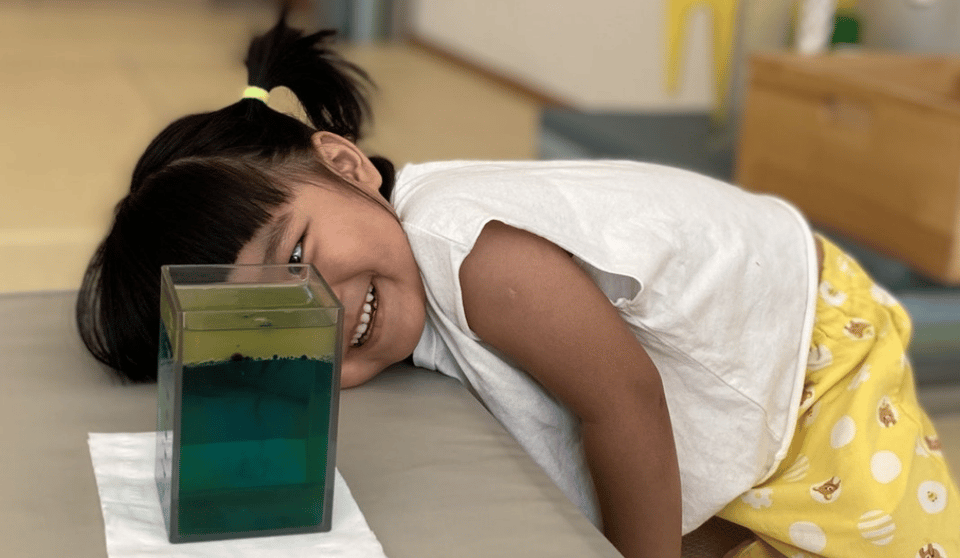
What is STEAM education?
There's a lot of buzz about STEAM education, but what's it all about? STEAM stands for Science, Technology, Engineering, Art, and Mathematics, and it has become increasingly buzz-worthy due to its relevance in today's world. The modern workforce demands professionals who are proficient not just in technological skill, but also in creative problem solving, collaboration, communication, design, and engineering[1].
Sometimes STEAM is narrowly regarded as a combination of science, technology, engineering, arts and math. However, rather than looking at STEAM from a subject perspective, we can see it as a holistic way to approach a phenomenon from different perspectives. In that sense, STEAM becomes more than its parts. When children learn STEAM, they combine many disciplines and practice transversal skills like creativity, inquiry, critical thinking, and problem solving.
Despite the high value these skills hold in modern society, many educators still employ traditional learning models, which are ineffective and frankly, unexciting, ways for children to learn STEAM. Think memorization, worksheets and textbook work.
HEI Schools and Kide Science, two Finnish-based early education companies, take a different approach to STEAM education. In their learning materials, they utilize methods like experimentation and hands-on projects, which let children engage directly with the material. These learning experiences foster transversal competencies early in a child's life, and children can then use such skills to learn and explore other content areas throughout their developmental years.
How do HEI Schools & Kide Science teach STEAM learning?
The approach that HEI Schools and Kide Science employs to teach STEAM is unlike many traditional early learning classroom methods. The latter tend to focus largely on memorization and rigid learning assignments. For example, children learn about nature and plant life by studying a diagram or reading a story, and then they prove what they learn by filling in a worksheet or taking a test.
Activities provided by HEI and Kide, on the other hand, guide children to observe plants or work in a garden. This allows them to explore their subject directly and learn through sensory, hands-on experience. Such techniques are designed not just to teach students, but to inspire in them a passion for lifelong learning. The following three methods - play-based activities, hands-on learning and themed projects - are some of the most common educational strategies that HEI Schools and Kide Science utilize in their educational approach to STEAM.
Play-based activities
Early childhood researchers and experts have shown that engaging in exciting, play-based activities is the most effective way for young children to learn[2]. For kids, playing is synonymous with learning, and they are most receptive to new information when they are happy, relaxed and active. In order to best direct their learning, it is important to provide educationally enriched play-based activities that interest and excite them, which is exactly what HEI Schools and Kide Science offer.
Let's take a HEI Schools activity as one example. In the activity "Traveling Colors," children participate in a playful experiment to learn about the physical properties of air and water. With some decanters, water, food coloring and paper towels, children observe how dyed water can travel through the paper towels and mix with water of other colors.
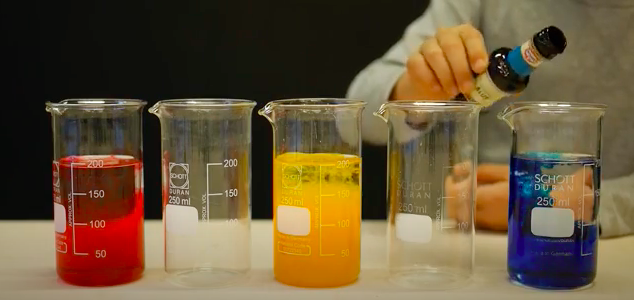 They learn about primary and secondary color, practice how to make hypotheses and document findings and observe how paper towels absorb water. It's also an opportunity for them to work on their fine motor skills while handling fragile science equipment. All of this happens in just one activity! And the best part is, children have tons of fun!
They learn about primary and secondary color, practice how to make hypotheses and document findings and observe how paper towels absorb water. It's also an opportunity for them to work on their fine motor skills while handling fragile science equipment. All of this happens in just one activity! And the best part is, children have tons of fun!
This and much more awaits you in our HEI Schools Toolkit, an online bank of learning materials available for any preschool in the world!
Kide Science uses a pedagogical approach to playful STEAM that is called Scientific Play[3]. In this model, play is nested in imaginary situations that are triggered by stories, scientist accessories, and other props. Children’s hands-on inquiry process is scaffolded by the story and play plot which the teacher orchestrates. This ensures that children are fully engaged and the inquiry is meaningful for them. While children are solving compelling problems, they will learn important science process skills and they co-construct their ideas of scientific concepts.
For instance, in the Thirsty Robot lesson, children and a teacher gather together to read a letter sent from Supraland. In the letter, a friendly robot called Hoseli asks for help from little scientists. Hoseli is very thirsty. He knows that there is only one liquid he can safely drink, but he has forgotten what it is! The only thing he remembers is that the liquid doesn’t get mixed with other liquids in his home. Hoseli has sent different liquids to children if they could find out the way to identify the liquid Hoseli can drink.
The letter invites children to step into an imaginary situation where they take the roles of little scientists who solve Hoseli’s problem. The problem-solving invites children to design a process to find out what liquid doesn’t dissolve in other liquids. Children practice science process skills: observing, measuring, interpreting, and finally, making conclusions when they present their results to Hoseli. The story and the role of a little scientist keep children behaviorally, cognitively, and emotionally engaged and they can build their scientific identities while they construct their meaning for concept solubility.
The Kide Science program saves teachers time in the demanding planning process of STEAM activities. Start your playful STEAM path with Kide Science right away!
Visit website
Hands-on learning
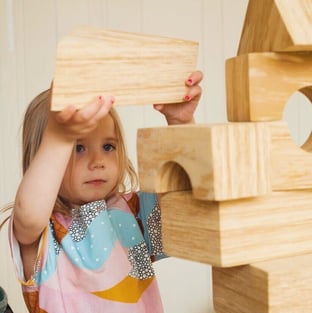
Another method that HEI Schools and Kide Science employ is hands-on learning. As many of us may know from experience, simply explaining a concept or fact to a child usually does not work. The child does not have a strong reaction to what we tell them or they are simply not interested. As very tactile and sensory-based creatures, children are most receptive to new information when they are involved fully with their body and as many of their five senses as possible[4]. The motto of early learning is "busy hands, busy brain," so introducing children to new concepts physically and sensorially guarantees that they will be responsive and connected to the material.
One such engaging HEI Schools experiment is called "At the Source of Hot and Cold." What do children do?
- Dunk one hand in hot water
- Dunk the other hand in cold water
- Hold for 30 seconds
- Put both hands in room-temperature water
- Observe the sensations in their hands!
Through this experience, children learn about temperature and the body's nervous system They also learn how to observe, discuss, and compare the findings of their experiment with each other, all while staying active and engaging their senses.
Thematic projects
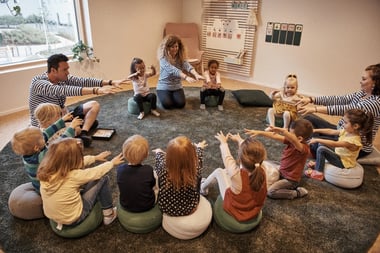 The HEI Schools and Kide Science approach to STEAM education is all about learning through doing. Applying new concepts and skills in a multi-step project is a much more effective way for young children to learn about problem solving, designing, and collaboration than by completing of a simple worksheet or test.[4]. By giving children a clear goal, we give them the intrinsic motivation to improve a specific skill or master a learning concept. A project typically has a fun result, so children are much more inspired to apply the skills needed to complete it than they would be if asked to take a test.
The HEI Schools and Kide Science approach to STEAM education is all about learning through doing. Applying new concepts and skills in a multi-step project is a much more effective way for young children to learn about problem solving, designing, and collaboration than by completing of a simple worksheet or test.[4]. By giving children a clear goal, we give them the intrinsic motivation to improve a specific skill or master a learning concept. A project typically has a fun result, so children are much more inspired to apply the skills needed to complete it than they would be if asked to take a test.
For example, a HEI Schools project called "Let's Build a Body" motivates children to learn about different body parts! They sit down with an outline of a human figure and a supply of photos depicting various body parts. As a group, they work to "reassemble" this person by identifying the body parts in each photograph and placing them on the human form. This task not only teaches children about the parts of the human body, but it also introduces them to teamwork, problem solving, and communication skills.
Why does STEAM education matter?
The early years of a child's development are critical, and the learning environments they experience can set them up for success throughout the rest of their life. With the engaging approach that HEI Schools and Kide Science take to STEAM learning, children have the opportunity to learn through meaningful, exciting activities. They start to build their confidence and skills to become future change-makers who can use different fields of sciences and imagination to solve complex problems.
Want to learn more?
Watch the recording of our webinar about play-based STEAM featuring HEI Schools and Kide Science experts. (P.S. It features a science experiment!)
[1] https://newmanu.edu/top-5-skills-employers-look-for
[2] https://search.informit.org/doi/abs/10.3316/informit.960046192255856
[3]https://www.tandfonline.com/doi/epub/10.1080/1350293X.2020.1783924?needAccess=true
[4]https://www.goodwin.edu/enews/benefits-of-hands-on-learning/
5]https://www.academia.edu/download/53864804/Project_based_science_education_program_for_kindergardens



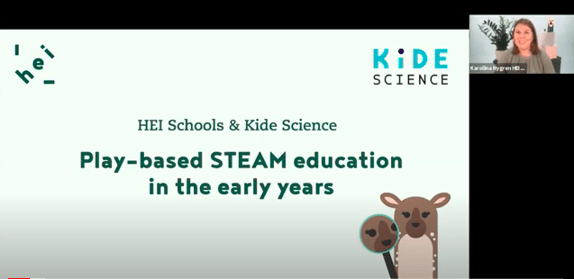

.jpg?width=352&name=how%20HEI%20Curriculum%20helps%20you%20to%20achieve%20Indias%20NEP%20(2020).jpg)

.png?width=352&name=Active%20participation%20is%20important%20in%20ECE%20(1).png)